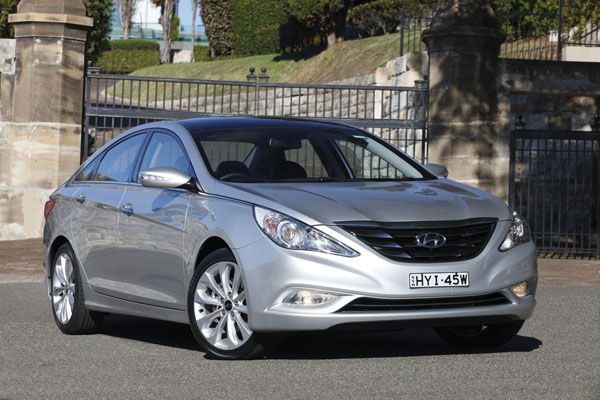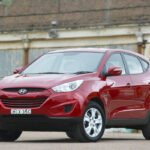Holden Astra is a small medium car that was popular in Australia for many years. Astras prior to 1996 were Australian-built and were closely related to Nissan Pulsars. From 1996 until 2010 Astra was imported from Europe where it was made by Opel, the German division of General Motors.
In this review we will only look at the German-made cars as the Aussie ones are getting long in the tooth and possibly past their use-by date.
Holden Astras were discontinued in 2010, but the nameplate was revived in September 2012, this time with Opel badges instead of Holden ones. The idea was to give the Astra a more upmarket image and sell it for higher prices (other Opel models were also imported – but that’s getting off the subject). The marketing exercise was a disaster and Opel pulled out of the market less than a year later.
Opel-badged Astras won’t be covered here as it’s too early for a history to have been built up, but we don’t anticipate any problems and we will cover them down the track.
As you expect from a European car, Astras offer pleasing dynamic performance and are a delight to drive. Keen drivers looking for a small-medium family car love them.
Older Astra are relatively small, but from 1998 they are significantly wider and can be used as family cars. Body types are many and varied. Three-door coupes, five-door hatches and four-door sedans make up the bulk of the Astras on the used market. A five-door station wagon was launched in 2005. Unlike some small Euro wagons, the Holden has a spacious load area thanks to a square tail that can hold reasonably bulky items.
A Holden Astra convertible was imported from 2002 until the end of the line in 2010. Convertibles from March 2007 were an all-new design and were given the tag of TwinTop due to the way the roof folded in two sections to maximise the length of the cabin space.
The top of the line Astra SRi Turbo was launched in the middle of 2003, then withdrawn a year later, only to make a return in 2006.
Engines are all four-cylinder units with 1.6-litre or 1.8-litre in most cars. The high-performance Astra GSi has a 2.0-litre unit. With the 1998 TS Astra, only the 1.8 was offered in the standard cars, with the SRi and convertible getting a 2.2-litre.
An Astra turbo-diesel engine joined the lineup in June 2006. It wasn’t particularly successful as a new car but is worth considering if you do big miles. These days the European marques are growing great guns with turbo-diesel engines, so there might still be a chance to pick up an Astra diesel at a good price before people wake up to this relatively unknown Holden turbo-diesel.
Five-speed manual and four-speed automatic transmissions are offered in all versions with the exception of the sporting GSi and SRi Turbo. The former only had a five-speed manual, the latter used a five-speed in its initial iteration and has a six-speed close-ratio box from late 2006.
Underbonnet accessibility in Astras is generally good and the car is relatively easy to work on. As always, some parts should not be repaired by a home mechanic.
Holden chose to hold onto two models in the otherwise-superseded TS series when the AH series was introduced in November 2004. One was the lowest cost variant and was given the title of Astra Classic, it was replaced by the Korean-built Holden Viva at the end of 2005.
There are Holden dealers in just about every corner of Australia, but some in more remote areas may not carry all parts for the Astra, so you may have to wait a day or so for them to be delivered. Spare parts prices are about average for this class.
Insurance rates are pretty reasonable when you consider that the Astra is a fully-imported European car. Get quotes in advance for the sporting variants, particularly the Turbo, as insurance costs can be substantially higher.
WHAT TO LOOK FOR
There can be quality control niggles in the older cars, so have a professional look over the car to find out its exact condition.
Try to test the engine when it’s cold after an overnight stop. Start it up and make sure the oil-pressure light goes out promptly. At the same time listen for any rattling and feel for unevenness in the engine’s idle.
Accelerate the car hard after the engine is warm and feel for any hesitation under acceleration. Look for a puff of smoke from the exhaust at the same time.
If you suspect a turbocharged engine has been driven hard get it looked over by an expert.
Check for crash damage and previous body repairs. Looking at the finish of the paint, as well as for overspray on unpainted parts, is often the best way to start.
Look over the cabin for seats, dashboard, door trim and carpets to make sure the car hasn’t been mistreated. Check the boot as well.
When braking hard the car shouldn’t pull to one side or the other and no one wheel should lock before the others. ABS, if fitted, will cause a vibration through the pedal as it operates.
Check for any tyres with uneven wear, particularly those at the front as they do the bulk of the work.
CAR BUYING TIP
Be wary of an ultra-clean engine bay, it may have given a big spring clean to hide a defect. Slightly dirty is normal, but filthy is a bad sign.













